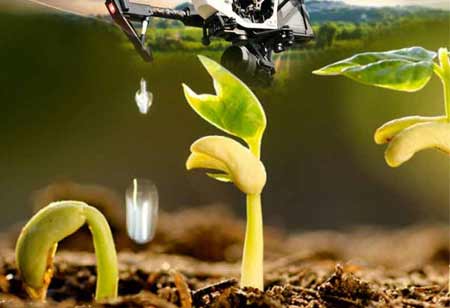Thank you for Subscribing to Agri Business Review Weekly Brief
Resolving 6 Issues With Vertical Farming
Agricultural open field farming has been a staple in human communities since they were first developed.

By
Agri Business Review | Thursday, September 29, 2022
Stay ahead of the industry with exclusive feature stories on the top companies, expert insights and the latest news delivered straight to your inbox. Subscribe today.
These six problems can be conquered by adopting a new vertical farming method.
FREMONT, CA: Agricultural open field farming has been a staple in human communities since they were first developed. Still, there are a lot of problems that this type of farming produces. These six problems can be conquered by adopting a new vertical farming method.
With vertical farming, We can find the solution to:
1. Water Shortage
Compared to regular farming, vertical farming uses up less than 5% of the amount of water that regular open-field agriculture uses. It utilizes hydroponics, aquaponics, and aeroponics ways, where water circulates in a closed loop, so nothing is wasted. Since the environment is fully controlled indoors, it is possible to recover water that evaporates from plants' leaves using dehumidifiers.
2. Deforestation
All arable land on Earth has already been used for agriculture. Expanding farming operations is impossible without cutting down the forests to create more space for plants to grow horizontally. That causes a huge deforestation problem which contributes to the worse quality of the air we breathe. About 24 million hectares of forest are reduced yearly, an area comparable to Great Britain's.
Vertical farming grows plants in vertical layers, thus saving a huge amount of space. Some farms can grow even 300 times extra food from 1 square meter compared to open field farming. Fewer needs for space could stop deforestation practices. Moreover, the recovered space could be utilized to restore forests lost in the past.
3. Biodiversity Loss
Limiting forest areas also destroys biodiversity. Scientists say that we are undergoing the sixth mass extinction of species in the history of the Earth.
With vertical farming, these natural habitats could be saved. The land spared from open-field agriculture could be utilized to restore and build new natural habitats for wildlife.
4. Soil Erosion and Desertification
Soil Erosion is a big problem caused mainly by farming and open field agriculture. Some soils cannot resist the transition from natural vegetation to crops, which leads to soil erosion on the topsoil layer. Desertification is when the soil dries up and cannot inhabit or support crops. This kind of soil is generally seen in drylands.
These phenomena are mostly caused by the excessive grazing of cattle and the leaching of soil by intensive drainage. With the rise of urban development by 2050, desertification is expected to take up almost 18% of the land area currently suitable for agricultural use. Yearly, we lose as much as 12 million hectares of land due to desertification, almost as much as the area the size of Greece.
Since vertical farming utilizes soil-less growing methods mentioned above, it doesn't contribute to soil erosion.
5. Access to Fresh, Healthy Food
The population in 2050 will be approximately 60% larger than in the year 2000. With the rise in population, food production will also have to increase. For agricultural farming to maintain the population, it will have to grow its production rate by 70% while rapidly losing land and resources. Even with developments in yields every year, that seems to be impracticable.
Vertical farming, in contrast, has much higher productivity than customary agriculture. In addition, it makes fresh food available to people living in food deserts or regions with harsh climates.
6. Dwindling Number of Farmers
In the past, farming was reviewed as a valuable and very common career. Several farming families would have their children start working on the farm early and then inherit it later in life. Still, times are changing, and fewer young people are interested in a farming career. Hence the average age of farmers is continually growing.
Farming is moving rapidly, and there are not enough farmers to maintain open-field agriculture at the current pace.
Vertical farming, on the other hand, seems more interesting for young people because it enables them to work with modern technologies. As it can be done anywhere (even in city centers), people don't have to stay in rural areas to turn into farmers.





